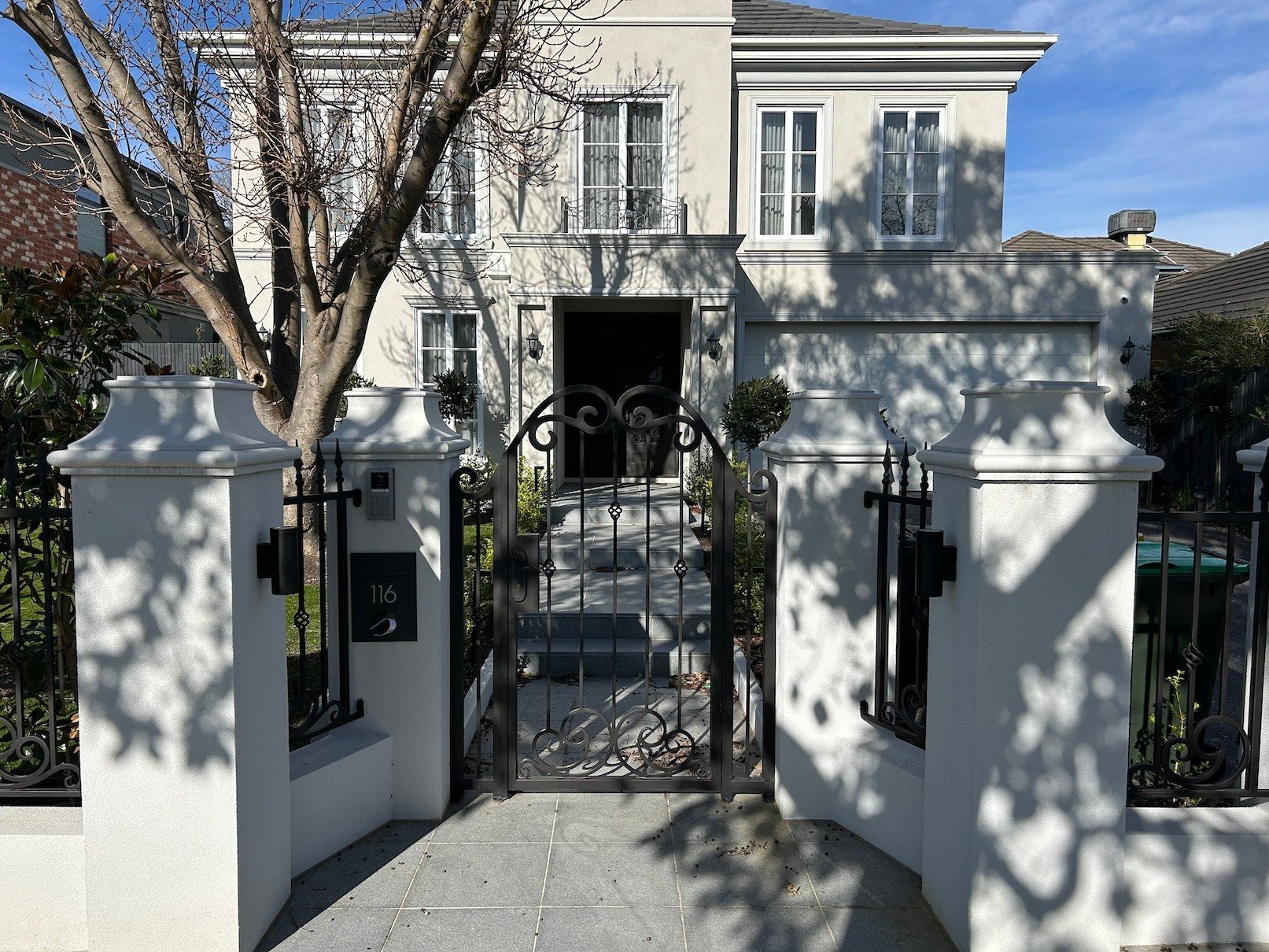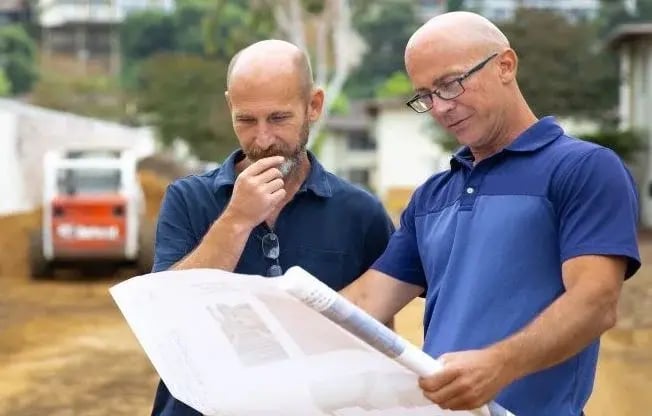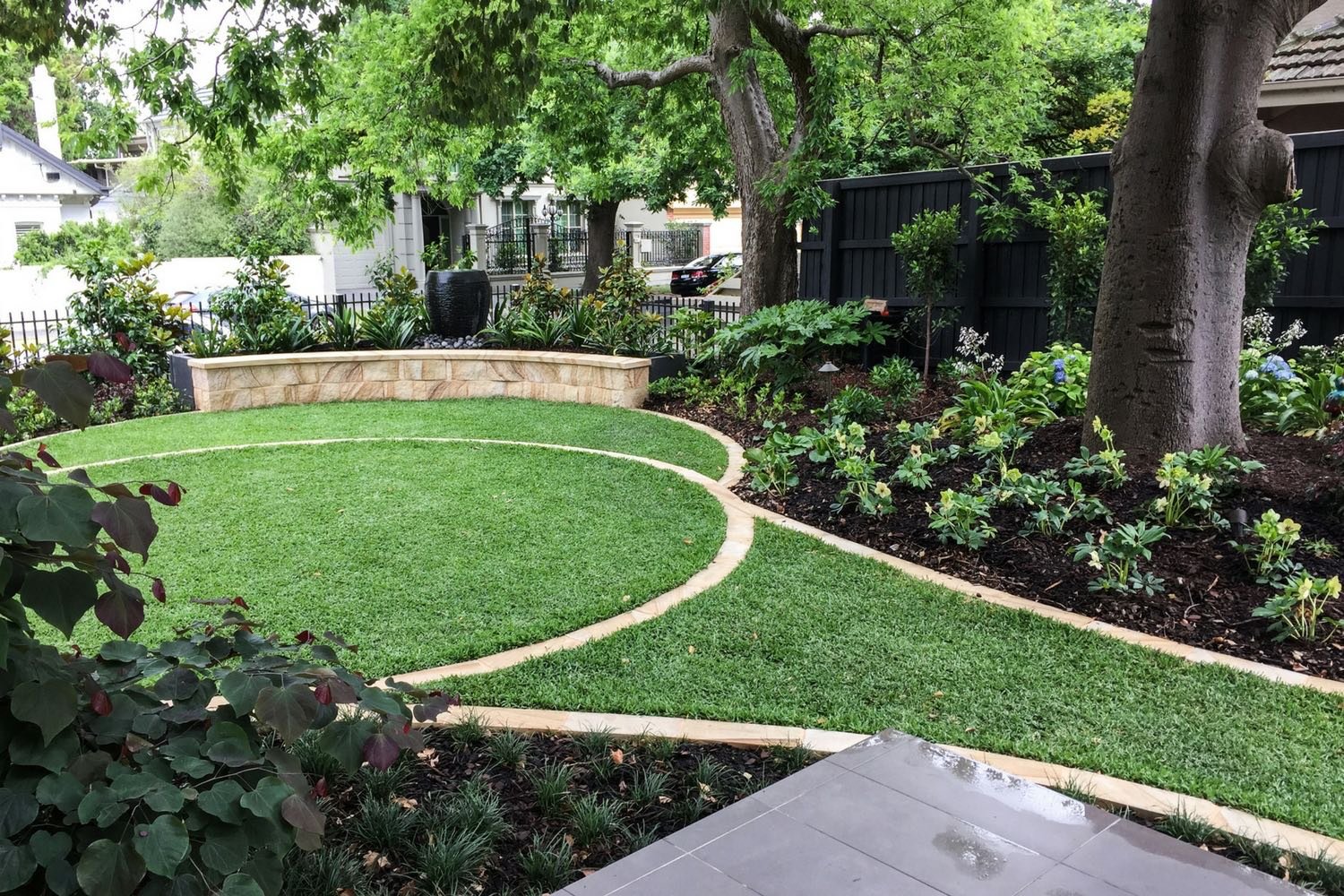
Are you trying to find the right designer and landscaper for your new garden project? Are you feeling concerned about whether the design will take you beyond your budget? Are you worried you might end up wasting money on designing a garden that you can't afford to build?
Over the past 30+ years, we have designed (and built) over 550 gardens, to every kind of budget, for our clients. So we have the experience to completely understand how you feel.
We've written this article to help you discover a little more about dealing with landscaping budgets. It explores a lot of key information you need to know about how budgets are formulated and how gardens are costed. We think this should ease your concerns a bit.
At the end, we'll take you through an exercise you can do that will help bring much greater clarity to this whole area and hopefully help you put all your worries to bed.
How is a landscaping budget normally set?
Perhaps the very first question to ask yourself is, how do you even set a landscaping budget?
If you were to look up the word 'budget' in a good dictionary you might find a definition like this one:
Budget: The amount of money that is available for, required for, or assigned to a particular purpose.
Note, there are 3 keywords in the definition:
Available - This one is easy. You have $120,000 in the bank ready to spend on landscaping your new garden or you have another source of funds you can draw on, so that becomes your budget.
Assigned - This tends to be either 'an amount of money you hope it might be' or 'what you feel the landscaping should cost you.' It's an amount you assign based on what you think landscaping your new garden might cost you.
Required - These first two meanings are what you come up with. But this last one is what the landscaper comes up with as they formulate the quotation.
How do these different definitions apply in a practical sense? Well, you might assign $30,000 in your mind toward the cost of the paving. But what is that based on? Do you have any experience in costing paving? Are you basing this on what your friends said about their paving costs? Or is it some perceived value you just feel is about right? So that's an assigned cost.
What happens with a required cost? Well, the landscaper calls the paving supplier and finds out the actual cost of them. He then works out the cost of the reinforcing steel, gravel, concrete, mortar, grout and sealing. Then, when calculating the labour, he determines how hard or easy the material will be to work with. He then determines the labour for laying that particular pattern of paving. For example 'crazy paving' which uses all sorts of different irregular shapes takes much longer to lay than regular rectangular or square paving. He also looks at whether the pavers will be delivered right next to the pathway he is laying to the front door or whether they will all need to be moved by hand and wheelbarrow up a steep slope to the back of the property. (You can imagine how much more time one adds to the job compared to the other.)
Going back to the original question, 'How do you set a landscaping budget?', you now know an important point.
A Budget is as realistic as detailed information about it is known.
The trap of the great 'Guesstimate'
The very worst thing you can ever hear a landscape designer say is "Oh yes, I have designed many backyards this size with a pool and I'd say you need to budget around...."
The reason it's the worst thing is because it's a trap. You now feel like "Ah ha, my burning question has been answered"! So you lock onto it. It becomes your fixed solution to the questions that have been running through your mind for possibly weeks or months.
You now feel confident you can move to the next stage as the answer the designer gave you didn't frighten you. So having fallen into the trap you now feel like you are all good to go.
It's even worse for us landscape designers when we are pressured by clients to give a "guesstimate". We are asked (usually with a smile) something like "So I'm just wondering, what do you think we should budget for our landscaping? I promise I won't hold you to it!" - but they often do and get annoyed that the guesstimate was wrong.
The bottom line is, a guess is just a guess, no matter how well-informed it is made to sound. Guesstimates are a way of building false confidence for a client. But they can go horribly wrong. And that's why we studiously avoid them.
How a real landscaping budget is formulated
As we established earlier, A Budget is as realistic as detailed information about it is known.
If we apply this, then it's fairly easy to see that the final quotation you approve for landscaping (which then goes on to form the basis of the contract) would be the most accurate budget you could have. Conversely, then, the least accurate budget would be one formulated at the start of the process before any real information about the job is known.
Now we know that the most problematic challenge for all clients is having to engage a landscape designer to begin the design process without actually knowing a realistic budget. (Let's come back to that in a moment.)
Let's first look at how a budget evolves and becomes more refined through each step of the process:
- Initial client meeting - the size of the garden is established and the wishlist is discussed, (i.e. a pool, pergola, paving, plants, lighting, irrigation, etc all noted as desired) An estimated budget range, based upon previous experience, might be made of around $150-250,000 for the landscaping not including the pool.
- Concept design stage - this stage accurately lays out the garden showing all the key desired elements of the client's wishlist and the area they will take up. While key information, such as the total area to be paved, is known at this stage, the actual pavers have not been chosen yet. Nor have the exact type or number of plants to be bought and planted. While this is now a more accurate budget range, it still includes some assigned figures, such as 'typical paver cost' or 'likely plant costs'. The figure might be narrowed down now to $210,000 - $230,000.
- Master Plan - at this stage, all materials, finishes, measurements and plants etc, are now detailed. A much more refined costing would now be given, which should be very close to the final amount that would now go into the contract. We might now provide a likely costing of $212,500 (+/- say $1,500)
- Engineering - if engineering is required for more detailed information about construction methods etc, this may alter the costs of footings or building methods. An additional small cost may be required, bringing the final budget to $219,250.
- Contracted price - with all the above stages now complete, a final fixed price can be established, which is what is entered into the contract that you sign.
What if you think the designed garden will cost more than you can afford?
Some of our clients come to us with very realistic expectations of what a wonderfully landscaped garden is likely to cost them. They ask us to go through the above process and when the final cost is established, they essentially say, "We will source the funds required to get this garden landscaped because it's exactly what we want."
For them, they can move comfortably through all the above stages and wait for the final costing to be established.
Others tend to be concerned about the budget right at the start and say they are worried about spending money on a design that they might end up feeling they can't afford to landscape.
We understand and appreciate that this can be a very valid concern. We wouldn't want you to waste your time creating something that you realistically can't afford. But equally, we wouldn't want you to deny yourself a beautiful new garden just because you made an inaccurate 'guesstimate' of how much it might cost, without actually knowing the real likely cost.
There is a solution to this situation. It's called having a Budget Session. (We conduct these for our clients without cost or obligation if you would just like to 'scope out' a potential new garden, without actually incurring the design cost or going through the above process.)
How a Budget Session Can Save You Stressing Over Costs
A budget session is a tool we have developed at Whyte Gardens to allow you to explore possible costings for your project with us, without incurring any costs to develop a landscape design.
You can have it in conjunction with your design session with our landscape designer to help sort out realistic expectations for a project before you begin.
Using the vast amount of experience we have gained over the years, we have created a simple budgeting tool that lists all the typical elements normally included in a landscaped garden i.e. pool/spa, paving, decking, outdoor kitchen, pergola, gazebo, plants, lawn, retaining walls, etc.
We use this tool in discussion with you to establish the key elements you were thinking of having in your new garden. We ask a lot of questions like "Would you like your rear alfresco dining area paved? Did you want a veggie garden? Are you considering a pergola?" Then we may ask, "What type of pergola did you have in mind - a simple one that will be covered in vines or a louvre-roofed one?"
The answers to each of these questions allow us to assign costs to each element in your potential new garden. For example, based on previous projects, we know that a louvre-roofed pergola might cost around $1500/m2, so we establish what size the client wants and assign a range of $25,000 to $30,000.
Then we go through each of the elements and do the same thing, arriving each time at a budget range. (As detailed previously, this is still an estimate, but it's a fairly accurate estimate as it is based on previous actual jobs.)
Going through this, we can then arrive at an estimated budget with a range of say $120,000 - $150,000.
At this point, it becomes much easier for you to make some informed decisions. You might say "Wow, I thought we could stretch it to $90,000, this is getting out of our range, particularly at the higher end."
Or you might say, "To be honest, I'd love it if it were just $90,000, but I can see that at least $125,000 is probably more realistic. We will go to the bank and arrange finance as a new garden with all these features is what we want."
The beauty of our budget session is that it takes away the guesswork and allows you a much greater appreciation of what things really cost. It also allows you to think through options like perhaps changing a feature or an element in the garden design or replacing one option with a cheaper option. Or looking at alternative ways of getting certain aspects of the job done.
A lot more options tend to open up when you can see the likely costs in front of you.
Does a landscape designer normally work to a budget?
If we go back to our dictionary, we can see it defines 'WORK TO' as:
"to work within the limits of (something)"
The simple rule is that designers design and landscapers estimate costs.
Imagine you're a landscape designer creating a garden design on your computer. You may be thinking, "Mmm, the best place for the pool is over here. So it will need paving to extend on four sides by this much. It will also need a path to link to the alfresco dining area across here".
Now, can you imagine the designer drawing this all up and thinking about how much everything is going to cost while they are designing? No. Generally, the designer will design according to the brief and then hand over the design for the costing process, which is not their job.
The designer has to create a design that has all the client's wishlist included, and only then, at the Concept Design stage, can the costing process begin.
What the designer can do is understand at the start of the process, when being briefed by the client, what level of sophistication the client is seeking. If they know that budget is a primary concern for the client, they can be more cautious in adding elements they know have a high cost. Or they can adjust the overall balance between paving and lawn in the design, as paving is one of the most expensive elements in landscaping.
When a Budget Session is conducted with the client as part of establishing the design brief, it serves to guide the designer’s creative approach, providing clarity on where to innovate and where to exercise restraint.
Calculating your own budget
Clients who have gained real knowledge about the range of costs for various elements in a garden design are better able to make informed decisions about their own projects. And that can make you feel more confident about proceeding.
We try to share as much knowledge as we can because we believe it is beneficial to both you and us. If you look around our website you will find our decades of experience laid out in articles to help you achieve that aim.
For example, our Pricing Page provides you with information to help you calculate your own budget.
There is also an article entitled How much will it cost to get my new garden landscaped which provides additional information.
We hope you found this article informative. If you find yourself with any remaining questions please feel free to contact us by phone or email.
Articles covering Landscape Design and Construction in Melbourne...
Are rebated landscape design fees really a good idea?
How are progress payments handled during a landscaping project?
How much will it cost to get my new garden landscaped?
Founder of Whyte Gardens
Topics:







